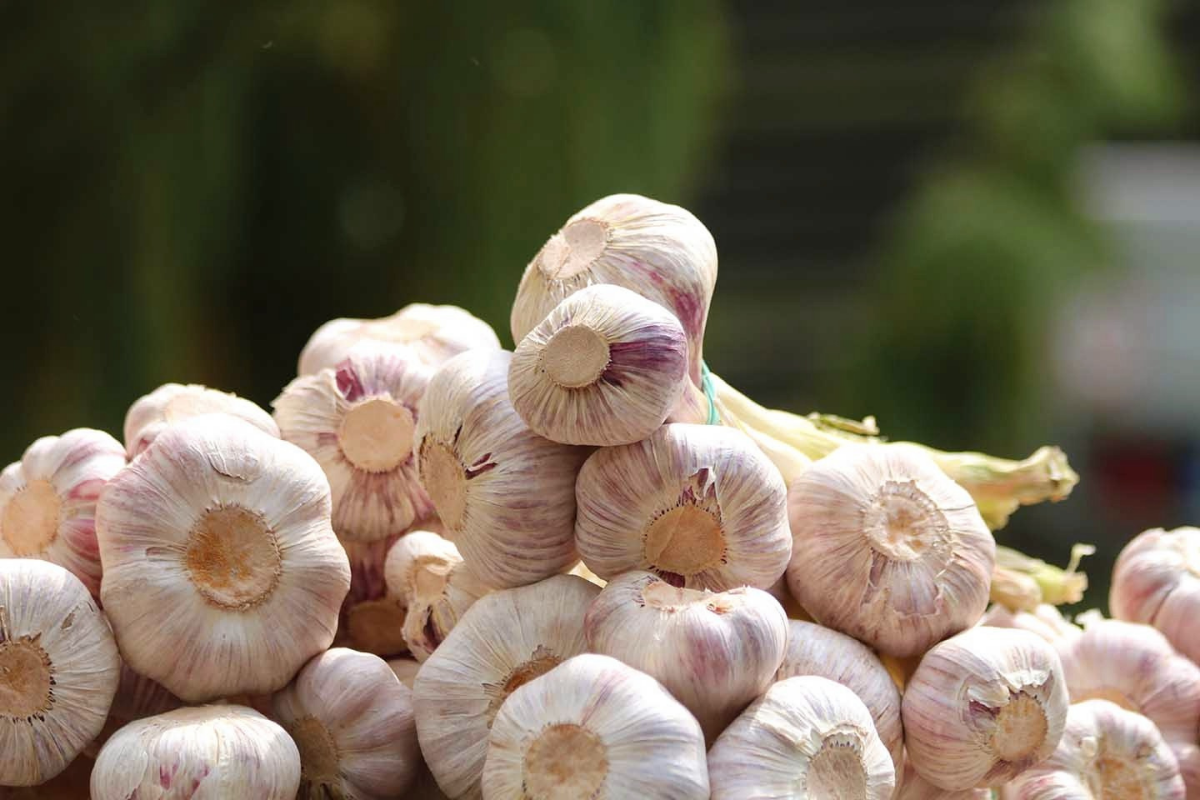
Time to Plant Garlic
Table of Contents
Fresh, firm and plump, growing garlic at home is easy and rewarding.
Just follow these simple steps for fall planting and next spring, when you see garlic sprouts pushing up through the soil you’ll know that you’ve got a jump start on a gourmet harvest.
When
Garlic is best planted in the fall and allowed to overwinter for harvest the following summer. Plant garlic in mid-autumn or at least one month before the first hard frost in your area. This gives the cloves a chance to develop roots, but keeps sprouts from breaking the soil surface before winter arrives.
Soil
Garlic performs best in well-draining sandy loam soils rich with organic matter. Avoid soggy soils as garlic tends to rot in overly wet conditions. It’s good to amend the soil with composted manure and till or loosen the soil well before planting. Garlic likes room to spread its roots.
When
Garlic is best planted in the fall and allowed to overwinter for harvest the following summer. Plant garlic in mid-autumn or at least one month before the first hard frost in your area. This gives the cloves a chance to develop roots, but keeps sprouts from breaking the soil surface before winter arrives.
Soil
Garlic performs best in well-draining sandy loam soils rich with organic matter. Avoid soggy soils as garlic tends to rot in overly wet conditions. It’s good to amend the soil with composted manure and till or loosen the soil well before planting. Garlic likes room to spread its roots.
Cracking
Leave the garlic bulbs whole until just before planting. This protects the cloves, keeping them in prime condition. When you’re ready to plant, break apart the bulbs into individual cloves. This is called ‘cracking.’ Each clove should break cleanly away from the bulb. Cloves should be firm and plump. Discard any cloves that show signs of damage, mold or disease.
Cracking
Leave the garlic bulbs whole until just before planting. This protects the cloves, keeping them in prime condition. When you’re ready to plant, break apart the bulbs into individual cloves. This is called ‘cracking.’ Each clove should break cleanly away from the bulb. Cloves should be firm and plump. Discard any cloves that show signs of damage, mold or disease.
Planting
Spacing is the key to growing the largest, healthiest, most beautiful bulbs. Garlic prefers space to grow and spread its roots. Plant garlic in single or double rows, spacing each row 6-8” apart. Within each row set individual cloves 6-8” apart. You can plant garlic cloves with tighter spacing, but your yield will be smaller at harvest.
Place each garlic clove, pointed tip up, in a hole two inches below the soil surface and cover with soil. That’s just how easy it is!
Planting
Spacing is the key to growing the largest, healthiest, most beautiful bulbs. Garlic prefers space to grow and spread its roots. Plant garlic in single or double rows, spacing each row 6-8” apart. Within each row set individual cloves 6-8” apart. You can plant garlic cloves with tighter spacing, but your yield will be smaller at harvest.
Place each garlic clove, pointed tip up, in a hole two inches below the soil surface and cover with soil. That’s just how easy it is!
Watering
After planting in the fall, it’s important to water and maintain even soil moisture so that roots can develop at the base of each clove. When winter arrives and the ground is frozen, garlic doesn’t require much water. It is in the spring through the early summer, when garlic sprouts push through the soil and the bulbs begin to form, that watering is needed on a regular basis: once every 3-5 days. Garlic likes soil that is not too wet, and not too dry.
Watering
After planting in the fall, it’s important to water and maintain even soil moisture so that roots can develop at the base of each clove. When winter arrives and the ground is frozen, garlic doesn’t require much water. It is in the spring through the early summer, when garlic sprouts push through the soil and the bulbs begin to form, that watering is needed on a regular basis: once every 3-5 days. Garlic likes soil that is not too wet, and not too dry.
Mulch
In many regions across Canada where the temperatures can reach -40°C (Zone 3) or colder, there can be periods of warming and cooling, of freezing and thawing. A 2-4” inch thick layer of mulch can protect garlic against winter extremes. Mulch maintains even soil moisture, consistent temperatures, and it inhibits weeds in the spring. If you choose to mulch, chopped leaves are ideal to use over the garlic bed.



Karen van Halderen
I have never grown garlic. When should I purchase the bulbs? Is April too early? Can you plant in late April for a late fall harvest?